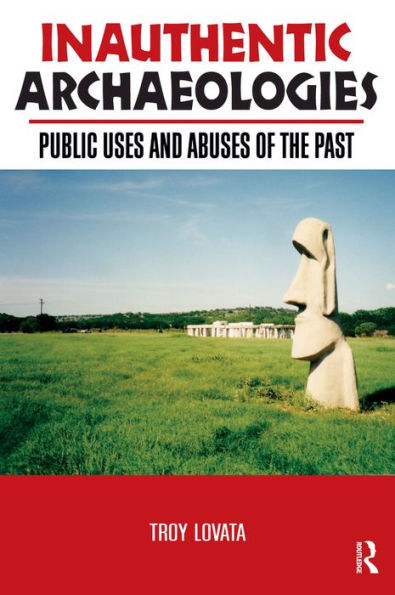Inauthentic Archaeologies: Public Uses and Abuses of the Past
Archaeology has an impact on the public far beyond what any archaeologist would imagine. In this concise, student-friendly look at the public appropriation of archaeology, Troy Lovata examines outright hoaxes, fanciful re-creations, artistic representations, commercial enterprises, and discredited replicas of the past. The book explores examples from around the world and across time to help readers understand how the past becomes social currency for both professional archaeologists and the public at large. Lovata addresses central questions of authenticity, ownership of the past, and the use of archaeology by everyone from artists to multinational corporations. Examples include the Piltdown Hoax, replica Anasazi cliff dwellings at Manitou Springs, Colorado, reconstructed Spanish torreons, and playful Stonehenge replicas. Student exercises, cartoons, interviews, and illustrations add to the pedagogical value of this concise, fascinating work for students in introductory archaeology classes.
1120053721
Inauthentic Archaeologies: Public Uses and Abuses of the Past
Archaeology has an impact on the public far beyond what any archaeologist would imagine. In this concise, student-friendly look at the public appropriation of archaeology, Troy Lovata examines outright hoaxes, fanciful re-creations, artistic representations, commercial enterprises, and discredited replicas of the past. The book explores examples from around the world and across time to help readers understand how the past becomes social currency for both professional archaeologists and the public at large. Lovata addresses central questions of authenticity, ownership of the past, and the use of archaeology by everyone from artists to multinational corporations. Examples include the Piltdown Hoax, replica Anasazi cliff dwellings at Manitou Springs, Colorado, reconstructed Spanish torreons, and playful Stonehenge replicas. Student exercises, cartoons, interviews, and illustrations add to the pedagogical value of this concise, fascinating work for students in introductory archaeology classes.
52.99
In Stock
5
1

Inauthentic Archaeologies: Public Uses and Abuses of the Past
168
Inauthentic Archaeologies: Public Uses and Abuses of the Past
168
52.99
In Stock

Product Details
| ISBN-13: | 9781315426914 |
|---|---|
| Publisher: | Taylor & Francis |
| Publication date: | 06/16/2016 |
| Sold by: | Barnes & Noble |
| Format: | eBook |
| Pages: | 168 |
| File size: | 10 MB |
About the Author
From the B&N Reads Blog
